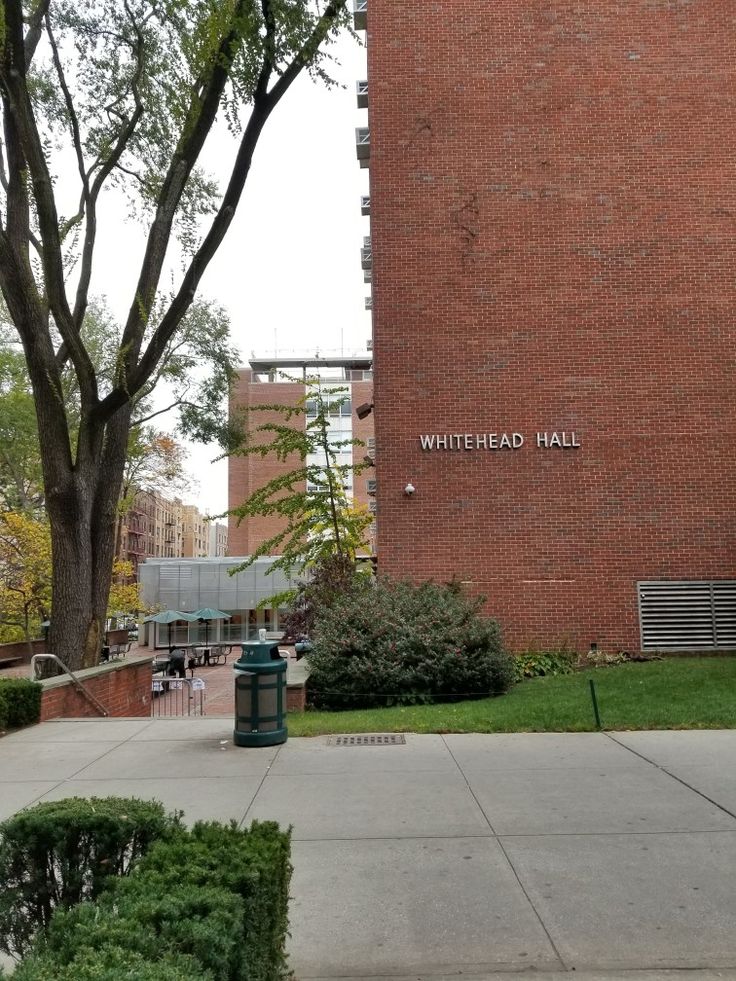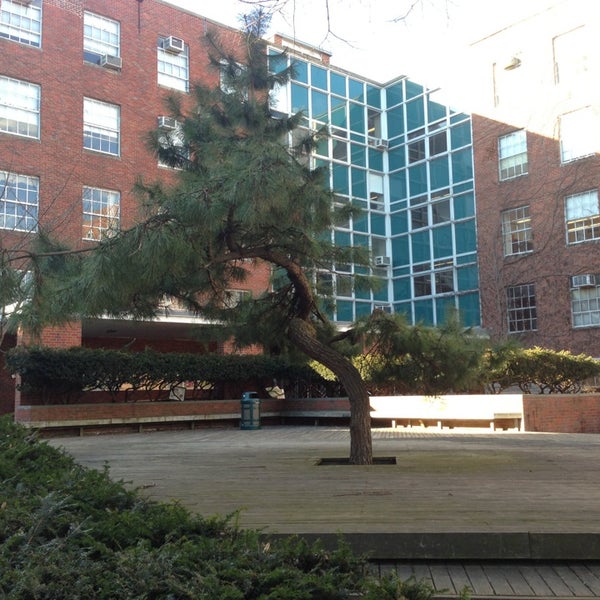Hyatt Carter
On 18 October 1963, an article appeared in the Kingsman, a publication of Brooklyn College, announcing the completion of a new building on the campus. In what they called a “Living Tribute” to the philosopher Alfred North Whitehead, the building was christened Whitehead Hall. The article, with pictures, occupies a full page in the Kingsman and comprises two stories, one about Whitehead and one about the building itself.
It may be of interest to note that I did not go looking for this article but ran across it accidentally while searching for something else online—a welcome serendipity! Here is my digitization of the complete article along with a couple of pictures I found.

Noted Academician Examined Various
Fields in Search of Truth
By Evelyn Eisen
“Life refuses to be embalmed alive,” British scientist-philosopher-educator Alfred North Whitehead once commented, “and the universe is not a museum with its specimens in glass cases.”
The Meaning of Life
The man after whom BC’s newest academic building is named felt the necessity of adjusting the constant changes that mark the mechanics of our existence to our current beliefs and needs. We also should not, he felt, accept the total “mass of fables termed history” without evaluating its value and relevance to our lives. In many cases, especially in the field of science, the past was a stage of mistakes and revisions of mistakes, according to Dr. Whitehead.
He also maintained that all philosophers asked the same simple question, “What is it all about?” To this, Dr. Whitehead stated, “After all, it is the blunt truth that we want. All the rest is addition, however important, to this foundation.”
He observed that it was at the college and university level that there existed the greatest need for a clarified attitude toward what should be taught as the truth, and how this learning should be integrated with experience. He recognized that the university was “entrusted with the creation of the future,” as the place where men should be introduced to the world, not sheltered front its realities.
The stifling of the “contagious disease of imagination” coupled with the tedious memorization of precise knowledge, which was never truly understood, in Dr. Whitehead’s opinion clouded the unity and interconnection of all areas of education.
“Murder Will Out”
“Your learning is useless to you,” he explained, “till you have lost your textbooks, burnt your lecture notes and forgotten the details which you learned by heart for the examination.”
He maintained that the great English universities, under whose direction students examine plays of Shakespeare to the detriment of their enjoyment, should be “prosecuted for soul murder.”
“To this day.” he once said in an Atlantic Monthly article, “I cannot read King Lear, having had the advantage of studying it accurately at school.”
Dr. Whitehead’s awareness of the importance of a living and vital scheme of learning began early in his life, when he was born in Ramsgate, England, in 1861 and received training “to serve God and state” at the Sherborne School in Southwest England. He attended Cambridge University as a student and Fellow from 1880 to 1910.
A Broad Mind
In London. he became a professor at the Imperial College of Science, then dean of the Faculty of Science and finally chairman of the Academic Council. His duties for the latter position entailed the administration of the internal affairs of London education. He was appointed professor of philosophy at Harvard in 1924 and later was named Professor Emeritus there. Dr. Whitehead died in 1947.
Dr. Whitehead’s exposition of the meaning and implication of the ideas and theories contained in his many books and articles continually stressed the importance of looking beyond the obvious. “Human nature, he stated, “loses its most precious quality when it is robbed of its sense of thing beyond, unexplored and yet insistent.” Yet, our overlooking the significance of those things closest to us caused him to comment that, “It requires .a very unusual mind to undertake the analysis of the obvlous.”
For Dr. Whitehead, “Philosophy began in wonder. And when philosophic thought had done its best, the wonder still remained.”
* * *

BC Social Science Building Opens
after Six Years of Effort
By Judy Solow
Over the site of what was formerly the sunken garden has risen Alfred North Whitehead Hall, the newest plant of learning on the BC campus.
In The Beginning
The saga of Whitehead Hall began officially in 1956, when President Harry D. Gideonse requested that $2.2 million be included in the New York City capital budget for the construction of a new staff and classroom building. The procedures that followed before the building could be constructed and then opened made the term “red-tape” meaningful.
“There are 20 steps involved in the preparation of maintenance and construction contracts,” BC Business Manager Arthur J. Hillary explained. In the years 1956-59, the major steps in preparation for the construction of Whitehead Hall were taken. They included the President’s 1956 request to the BHE, the BHE request for an appropriation for the architect’s fee, the New York City Board of Estimate’s approval of the architect’s contract, the BHE’s approval of the preliminary and then the final plans and specifications for the building, the Board of Estimate’s approval of the final plans and specifications, the advertising for bids on the new construction, the authorization of the awards of the contracts for construction and the Board of Estimate’s approval of the contracts.
Chairmen’s Choice
The name of Alfred North Whitehead was suggested for the new social science structure by Professors Charles Ascher, John Hope Franklin, Howard Hintz, Rex Hopper and Jacob Loft, chairmen of the Political Science, History, Philosophy, Sociology, Anthropology and Economies Depts., respectively. The philosopher’s name was selected because his learning cut across several disciplines.
Work started on Whitehead in Apr., 1961 but was halted temporarily four months later because of a 58-day cement strike. Finally, in the summer of 1963, Whitehead was made available for classes. At that time, only the classroom furniture had arrived so that folding chairs had to be used in the faculty offices. “There were seats for the students, but no desks for anybody else.” Mr. Hillary observed.
Early Housewarming
The effects of “moving in a bit ahead of time” are still obvious, since the clocks are suspended at nine o’clock and there are no bells to mark the beginning and end of class periods. The electrician is working on these things and will have them in operation soon, according to Mr. Hillary.
The college is also looking into the possibility of “putting something that would have artistic merit” on the blank wall of the building that faces the library. “We do not anticipate that the uninteresting, characterless red brick wall will remain indefinitely,” Dean of Administration Francis P. Kilcoyne said. The Biology Dept. is currently making plans for landscaping the building.
The building, originally authorized to help relieve the overcrowding of 7,768 CLAS, 8,392 SGS and 1,908 Graduate Division students and 850 faculty members, opened to a BC population of 10,047, 10,440, and 3,250 students respectively, in these divisions and a faculty of 1,200.
“When the building was authorized, we were not living in an ivory tower,” Dean Kilcoyne pointed out. “We knew that our enrollment was going to go up but we did think that the classrooms and lecture halls of Whitehead would provide some relief. In the six or seven years that have elapsed since the original planning, the enrollment, however, has risen to a figure far exceeding our expectations,” he explained. There is enough steel in the structure for the addition of two more floors as well as provision for another elevator, if necessary.
—HyC
—